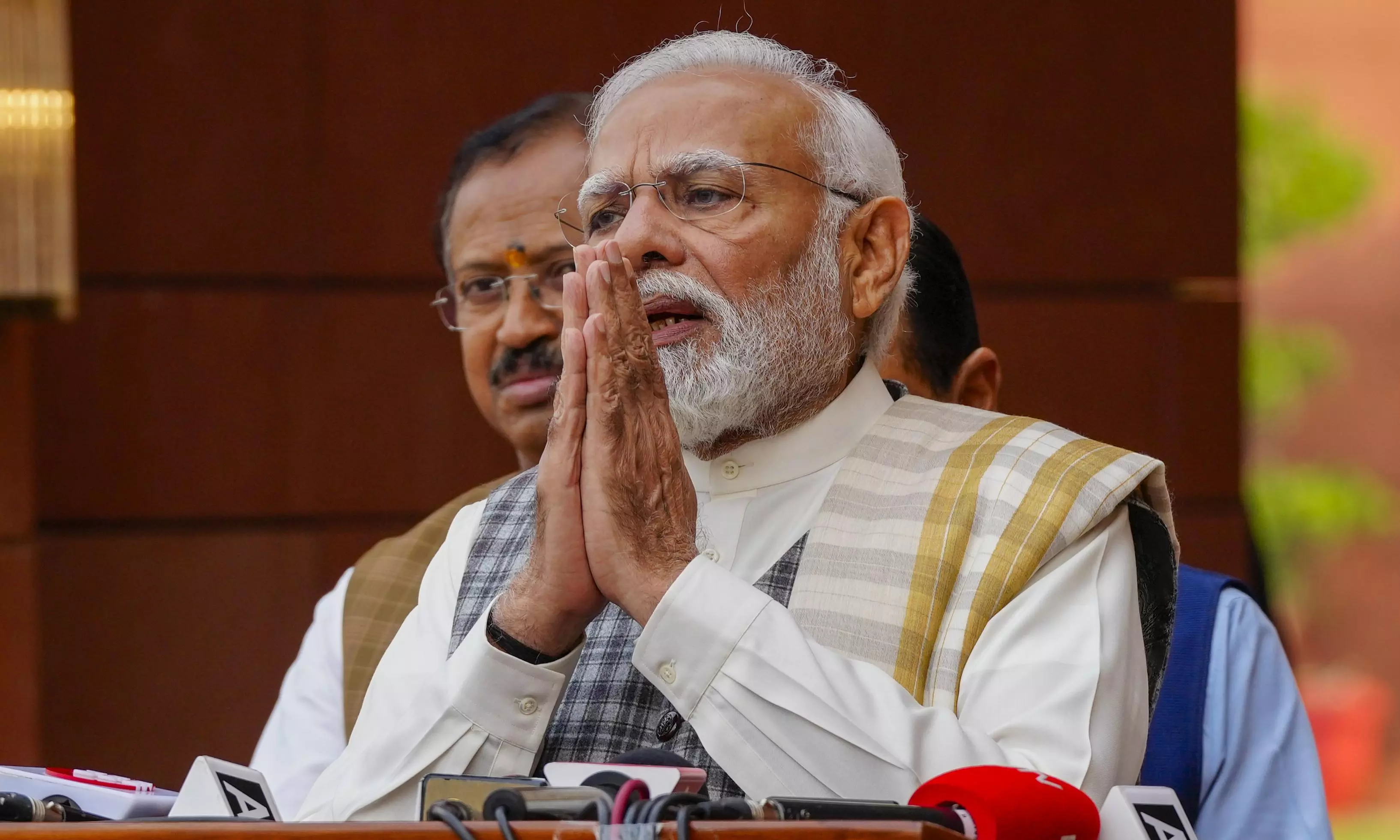
BJP’s key state wins weave optimism in markets amid some concerns
The BJP’s 3-1 victory margin was not fully anticipated, suggesting that the market will likely respond with significant gains

The Bharatiya Janata Party’s (BJP) electoral triumphs in key Indian states — Madhya Pradesh, Chhattisgarh, and Rajasthan — have ignited enthusiasm and scepticism within the country’s economic landscape.
While stock markets have soared, mirroring investor optimism, these victories have also highlighted the intricate relationship between political success, policy efficacy, and the role of welfare politics.
On Monday (December 4), the Indian equity benchmark touched a record high following the victories of the ruling party in three states. The Sensex rose 1,106.63 points to a record high of 68,587.82, and the Nifty50 index increased 350 points to 20,602.50.
The Indian stock market had already begun factoring in an edge to the BJP in the state elections. However, the 3-1 victory margin was not fully anticipated, suggesting that the market will likely respond with significant gains.
According to several brokerage firms, the BJP’s electoral win in these critical state elections boost India’s appeal for foreign investors and inflows into local equities. Additionally, this victory reinforces expectations of a Modi win in the 2024 national elections.
Policy stability and fiscal consolidation
BoFA Securities has said the BJP’s better-than-expected result in maintaining policy continuity at the Centre in 2024 is notable. The brokerage’s confidence in the government’s fiscal consolidation route looks optimistic, citing predicted budgetary deficit objectives and tax receipts. While the likelihood of continuous single-party rule may signal stability, it raises serious concerns about the nature and effectiveness of these programmes.
Pollsters had forecast that the Madhya Pradesh government’s Mukyamantri Ladli Behna Yojana, announced on March 5, 2023, will positively impact the BJP. The scheme promises a monthly handout of Rs 1,000 to all eligible women in Madhya Pradesh without any counter-guarantee. Despite losing comprehensively to Congress in the Karnataka elections, the BJP’s implementation of this scheme in Madhya Pradesh demonstrated a strategic pivot in its approach to welfare politics. The scheme costs the state government Rs 1,200 crore monthly.
The scheme’s success is underscored by the enrolment of over 13 million women in its first tranche starting June 2023. The Mukyamantri Ladli Behna Yojana represents a new paradigm in Indian electoral strategy, where targeted welfare schemes can significantly influence voter behaviour, particularly among women.
Need for caution
According to Nomura, the fact that the BJP has maintained electorate support in crucial states demonstrates the party’s lasting appeal. Motilal Oswal’s projection of a pre-election stock market surge based on historical tendencies shows short-term investor optimism. While historical data may offer favourable market returns, depending exclusively on previous trends to forecast future market behaviour might be deceptive.
Jeffries’ forecast of a Modi victory in the 2024 General Elections and its expected favourable impact on domestic cyclical industries calls for caution. The brokerage firm said it is bullish on banks, industrials, power, property and midcaps. CLSA’s report, which does not factor in efficiency improvements in its growth projections for India, suggests that the country’s growth is driven more by capital investment than efficiency gains. This reliance on capital accumulation, mirroring China’s growth pattern, points to potential challenges in improving India’s incremental capital output ratio (ICOR), a measure of how effectively a country uses capital to generate economic growth.
In its note, CLSA said its forecast for India’s economic growth does not include efficiency improvements. “We see India’s growth being driven more by capital investment, similar to China.” Neither China nor India have recently improved their incremental capital output ratio (ICOR). ICOR measures how effectively a country uses capital to generate economic growth. Improvements could come from developing a corporate debt market, especially after India joins the JP Morgan Emerging Market Bond Index Diversified. Other factors include successful government reforms and increased investments by global companies moving production from China to India. However, this shift’s immediate benefit to India’s economy is limited.
CLSA, however, noted India’s current account deficit and fiscal deficit are not seen as significant risks. The fiscal deficit, the difference between the government’s earnings and spending, may not improve quickly. This is because the government is investing in the economy during times when private companies are not spending much.
“High fiscal spending is also necessary to support the population during periods of economic strain. In the Indian economy, the causality typically runs from growth to budgetary deficit rather than vice versa. Years of high/low growth usually result in increased/reduced tax collections to reduce/raise the fiscal deficit. Also, empirical tests tell us that one rupee of public consumption expenditure leads to a maximum of one rupee of GDP, while one rupee of public investment generates Rs 2.5 of GDP; the impact of the first is immediate, while the latter takes time,” CLSA pointed out.
The increase in foreign investment and domestic equities reflects the global perception of India as a stable investment destination under the BJP’s rule. However, while policy continuity may be appealing in the short term, it does not always imply policy efficacy.

